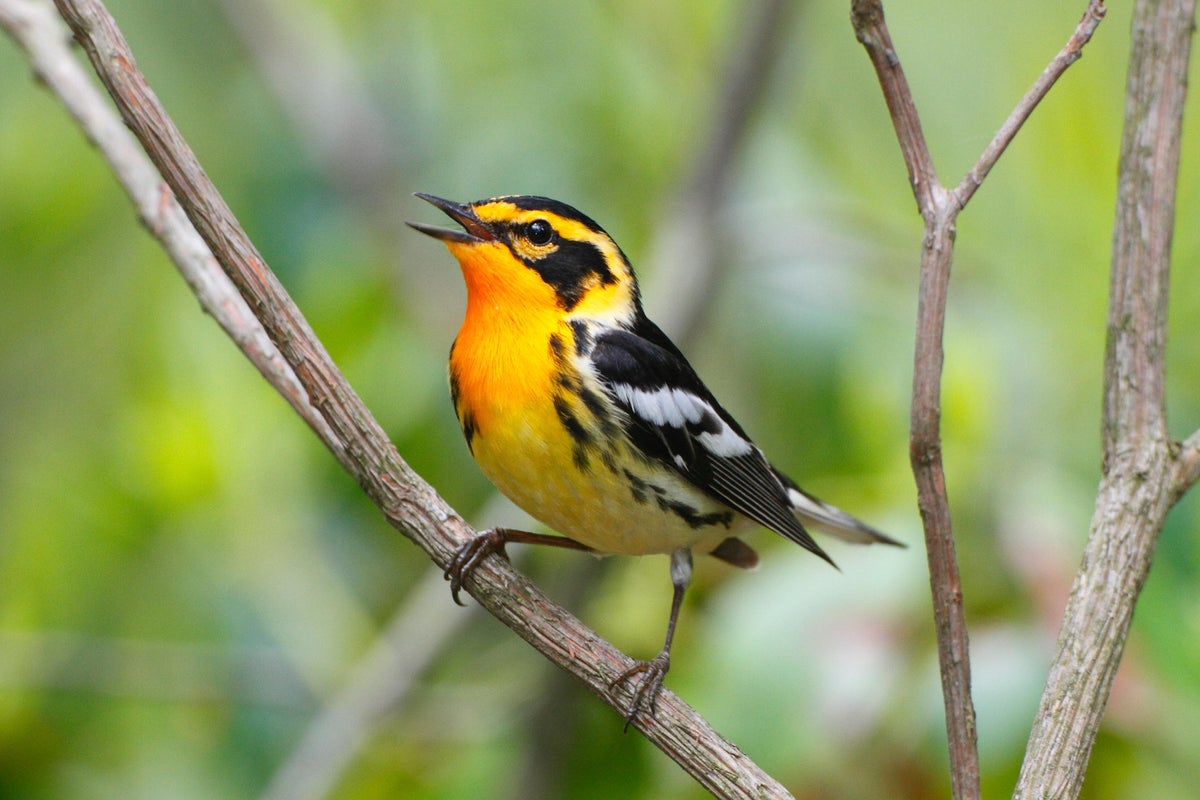Bird Migration Is Peaking in the U.S.—Here’s How to Watch
The spectacle of spring bird migration is in full swing, and you can get in on the action
A male Blackburnian warbler (Setophaga fusca) singing a territorial song.
Join Our Community of Science Lovers!
The spring migration of birds from their southern wintering grounds to their breeding grounds in the North is about to reach a fever pitch. Over the next few weeks, most of the U.S. is heading into peak migration, when hundreds of millions of birds can wing their way across the sky in a single night on a mission to claim a prime bit of real estate, attract a suitable mate and get to work raising the next generation. For bird-watchers, this is the most thrilling time of the year.
Many of these migratory birds travel vast distances between their winter and summer homes, taking advantage of seasonal abundances in food and daylight. The Blackpoll Warbler, a songbird that weighs about as much as a AAA battery, travels as many as 5,000 miles to reach its breeding grounds. The Red Knot, a stout shorebird with an orange-pink breast, may journey nearly twice that distance, sometimes covering more than 600 miles in a single day.
If you’re enjoying this article, consider supporting our award-winning journalism by subscribing. By purchasing a subscription you are helping to ensure the future of impactful stories about the discoveries and ideas shaping our world today.
The birds are now looking extra snazzy—bright and glossy, dressed to impress in their breeding plumage. Colorful, shiny feathers can signal good health to potential mates. And birdsong is once again filling the air as birds tune up and start belting it out to flirt and defend their territories.
Birds are everywhere—look for them in your yard, your local park, the cemetery down the road, the grocery store parking lot. Get outside early if you can; birds tend to be most active in the morning. For a closer look at their beautiful colors, patterns and other details, use binoculars. A field guide can help you figure out which species you’re observing— The Sibley Guide to Birds is especially good and is available as an app. Another guide in app form is Merlin Bird ID from the Cornell Lab of Ornithology. It has a nifty feature that can help you identify birds by their songs and calls. If you want to participate in a community science project, you can enter your observations into Cornell’s eBird database.
Spring is not only a perfect time for veteran bird-watchers to spy an elusive species. The availability of means that even a novice can easily identify and learn about the birds they observe.
There’s birding, and then there’s extreme birding. Follow a team of competitive birders as they race to track down as many bird species as they can over the course of 24 hours.
People often wonder about the link between dinosaurs and birds. Here you can learn about how, over millions of years, evolution forged small, flight-capable birds with feathers and wings from nonavian dinosaurs.
Kate Wong is an award-winning science writer and senior editor at Scientific American focused on evolution, ecology, anthropology, archaeology, paleontology and animal behavior. She is fascinated by human origins, which she has covered for more than 25 years. Recently she has become obsessed with birds. Her reporting has taken her to caves in France and Croatia that Neandertals once called home, to the shores of Kenya’s Lake Turkana in search of the oldest stone tools in the world, to Madagascar on an expedition to unearth ancient mammals and dinosaurs, to the icy waters of Antarctica, where humpback whales feast on krill, and on a “Big Day” race around the state of Connecticut to find as many bird species as possible in 24 hours. Kate is co-author, with Donald Johanson, of Lucy’s Legacy: The Quest for Human Origins. She holds a bachelor of science degree in biological anthropology and zoology from the University of Michigan. Follow Wong on X (formerly Twitter) @katewong
Source: www.scientificamerican.com
